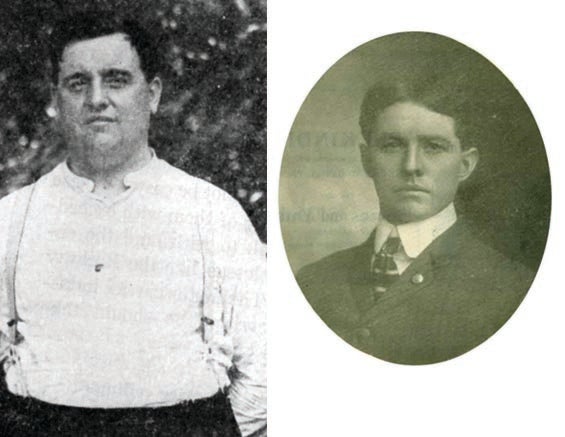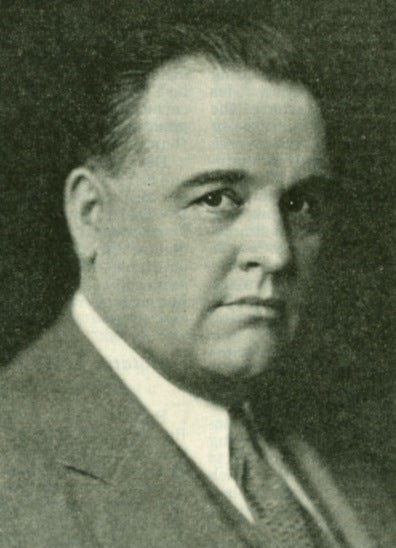Uncategorized
1908: Growing Strong

One of Daniel Tobin’s first acts as General President was appointing John M. Gillespie as the first International General Organizer. Gillespie finished out his term as a Business Agent for Local 25 and began his service on behalf of the International Union in 1908. Working out of Local 25 headquarters at 165 Causeway Street in South Boston, Gillespie covered the New England and the New York regions, though he often traveled further to help with labor-management and jurisdictional disputes. Tobin and Gillespie had weathered many struggles together, including a strike against Standard Oil in 1905; and he placed complete faith in his friend to fulfill his responsibility and do what was best for the union and its members.
 |
|
“John Gillespie was the most distinguished official in the American Labor Movement. In all my years of union service I never knew a better man, a better friend or a better unionist.” –Dan Tobin |
Organizing workers and growing the union would be Tobin’s primary objective during his first year as General President. In later years, he would attribute the strength of the IBT to friends like John Gillespie. Another key ally in Tobin’s administration was Chicago labor leader, a bright 33-year-old by the name of Thomas L. Hughes. A founding member of Local 705, Hughes rose through the ranks and, in 1906, was elected General Secretary-Treasurer of the IBT, ushering in a new chapter for the IBT. Following the Tobin’s election, the two men quickly became a Teamster “dream team,” forming a partnership that would last decades, each bringing their unique talents and vision to create the foundation needed for the Teamsters to become the country’s strongest union.
With Tobin and Hughes at the helm, the Teamsters began to expand dramatically and mature organizationally, becoming a premier advocate for the working class. Both men saw the need to communicate with a growing membership. Tobin took the lead on revamping the union magazine, writing and editing the publication under a new title: International Teamster.
Printed in Indianapolis by members of the International Typographical Union, theInternational Teamster would become the “official organ” of the Teamsters Union. The magazine would serve as the voice of the IBT and bully pulpit for Tobin who would share concerns and ideas and values close to his heart with members, uniting the union under a single message of solidarity.
Tobin also saw the need to unite locals regionally. Prior to his election as General President in 1907, power in the union was held by big-city locals—which would handle all research, contract negotiations, legal services, communication and strike activity. Tobin saw the conflict with this form of governance structure and pushed for the development of “joint councils” to which all local unions were forced to affiliate. Varying in geographical and industrial jurisdiction, the joint councils became important incubators for up-and-coming leadership and negotiating master agreements which covered all employers in a given industry. As collective bargaining became the norm throughout the Teamsters, Tobin actively discouraged strikes in order to bring discipline to the union and encourage employers to sign contracts.
Another telling anecdote from 1908 is told in Tobin’s memoir, Daniel J. Tobin: A Teamster Life. Recounting the state of organizing prior to 1908, author Joy M. Copeland writes:
“In 1908, International Organizers were run out of St. Louis. Tobin decided to go there to re-affiliate the independent United Teamsters of America back under the International umbrella. At first, Tobin was advised that he should not to go to St. Louis since the situation there was too dangerous. But Tobin was never one to turn his back on a challenge. He went anyway. Speaking to 1,000 men assembled in the gas-lit hall over a saloon, Tobin told the men that unity was their only hope. An effective speaker, he often used his own experience and struggles as a driver to talk to men in terms they understood. That night, he knew he had been effective. But little did he know until later that while in St. Louis, he had been under the special protection of a state senator and his brother who owned the saloon. They had advised the independent Teamsters that “under no circumstances should harm come to” Tobin.6 Two or three weeks after Tobin had addressed the large St. Louis gathering, the men of the independent union voted to return to the International Teamsters. That was one major merger accomplished and there were still a number to go.”
Undoubtedly, 1908 proved to be a pivotal year for Tobin and the Teamsters Union. As the once fledgling IBT refocused its efforts, they would expand their reach and scope — organizing more members and emphasizing the need to learn the issues facing America’s labor movement. By communicating with workers and forming regional power structure, Tobin strengthened the International, laying the groundwork for the Teamsters to become a powerful national player and, subsequently, an influential voice on the political stage.